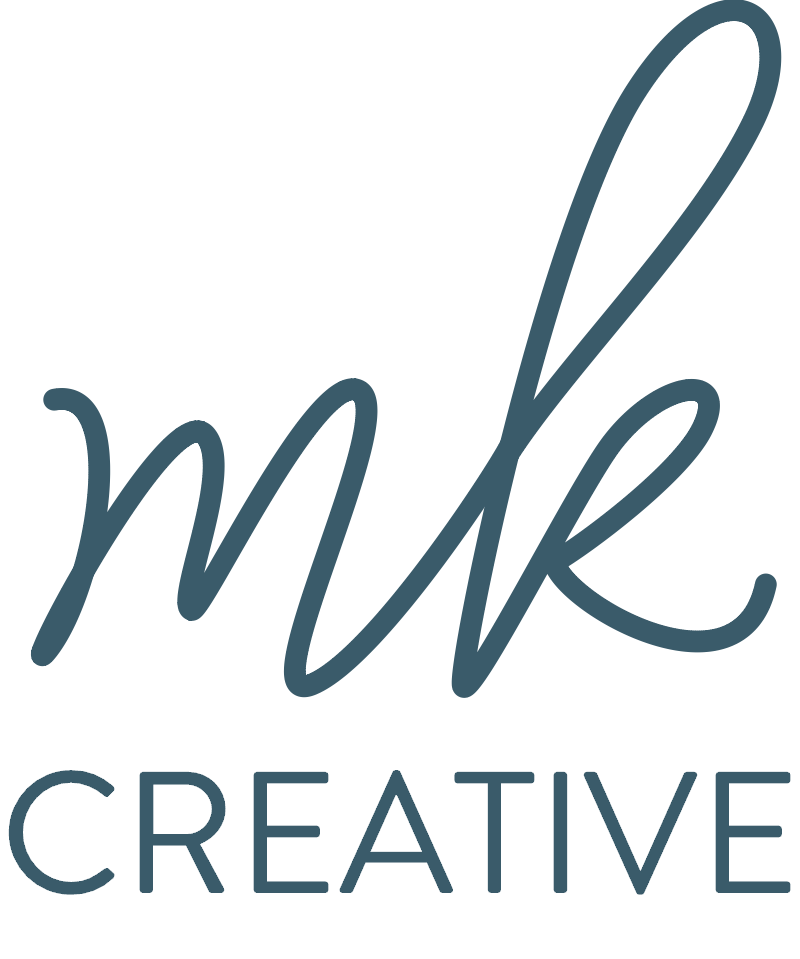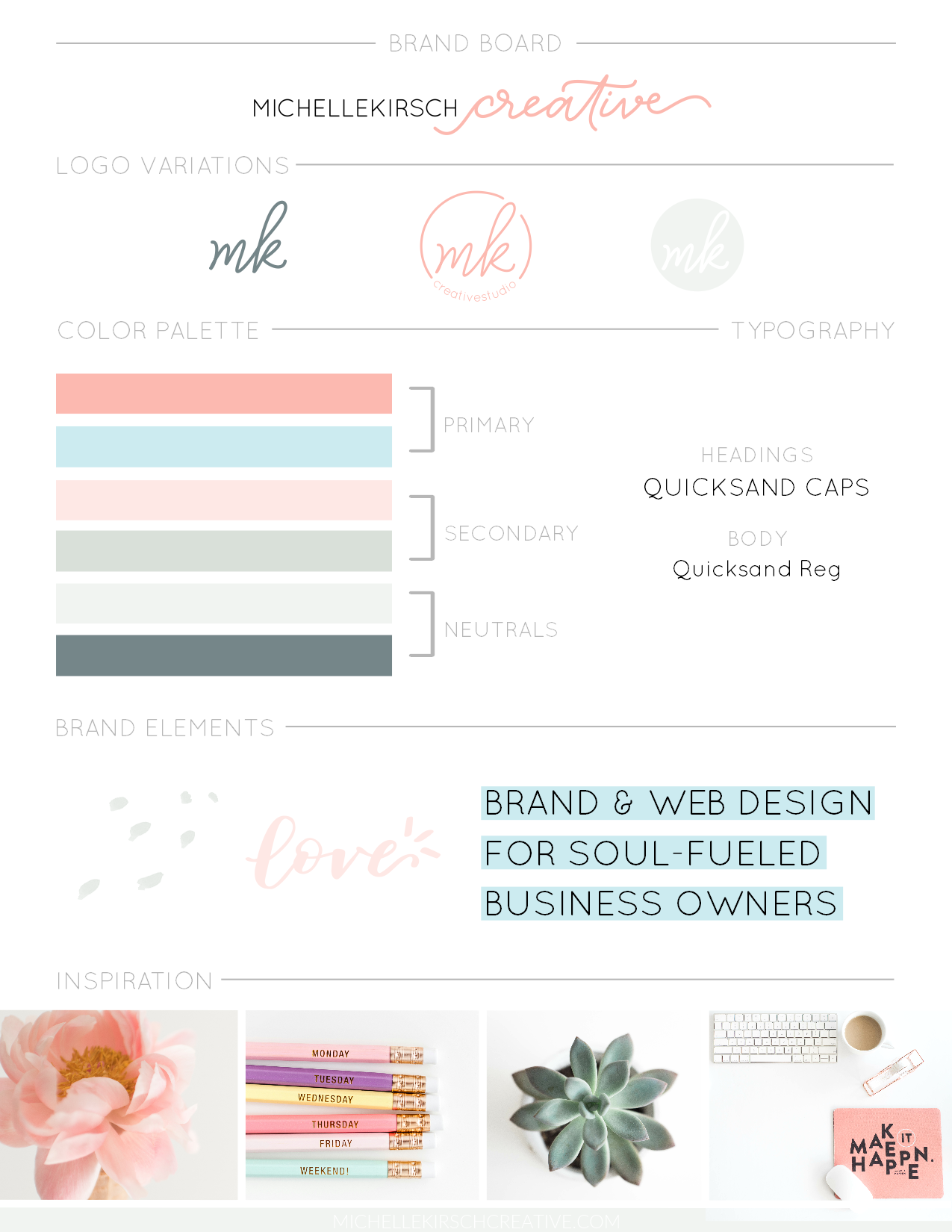Mood Board, Brand Board, Style Guide – what are they? A comprehensive guide to brand documents for your business.
One of my favorite parts of designing a brand experience is creating an inspiration (or mood) board and and brand style guide.
You’ve probably come across many similar terms when it comes to building a brand: mood board, inspiration board, style board, brand board, brand guide, style guide, etc.
What’s the difference between all of these and which ones do you need for your business? I'm breaking down the most common brand documents below!
(Not sure what a brand really is? Start here)
Inspiration Board
Generally a mood board and inspiration board are referring to the same thing and come early in the design process. Usually presented as a collage of images, inspiration boards are designed to evoke the intended mood or style of your brand. They serve as an inspirational tool to help kick off and guide the brand design process.
Brand Board
A brand board, brand style board, or style board are usually referring to a visual summary of your brand identity that is presented on one page for easy reference. It’s like a brand cheat sheet containing all of your brand’s visual elements (logo, colors, fonts, images) in one place.
Brand Style Guide
A brand guide, brand style guide, style guide, brand book, or brand bible are usually referring to a more in-depth version of your brand board. This includes all brand decisions such as logo alternatives and logo use, color palettes and pairings, complete font systems, brand graphics, patterns or icons, photo styles and treatments, and possibly even brand tone, voice and content style.
My process
I start the brand design process by creating an inspiration board that captures the desired style and personality of a business. (My brand clarity workbook helps clients pinpoint an authentic and strategic brand personality.) From there, I use the inspiration board to guide me as I draft logo concepts, pull color swatches and build out the full brand concept.
When the full brand identity is complete and approved, I provide clients with a brand board (summary) as well as a comprehensive brand style guide.
What does your business need?
Every business needs some sort of document to define their brand. Even if it’s a basic brand board with just your logo, colors, and fonts, you’ll be able to easily refer to it when creating web graphics, blog posts, or social media posts. This will go a long way to ensuring your brand looks professional and consistent online. (So that you can start attracting those ideal clients!)
If you’re not quite ready to work with a brand designer, you could also make your own brand board and style guide!
Here’s an example of my simple visual brand board. I’ve included my main logo and logo variations, my color palette and fonts, brand elements/treatments, and some inspirational images that represent my brand personality.
If you’d like to create your own, I have a blank template that you can download as a PDF or JPG. You can use it as a guide and create your own, or import into Canva, Illustrator or any graphics program and place your brand elements on top!
How to use your brand board
So now that you’ve got this handy document at your fingertips, what do you do with it?
The purpose of your brand board (and style guide if you make one!) is to help you present your brand clearly and consistently on your website, on social media, in print and any other points of contact where your potential clients may interact with your business.
This means that you should be reviewing and referring to your brand documents whenever you create a marketing piece, whether online or offline.
Here are a few suggestions to get your started:
Your Website
Your website is your digital storefront, so it only makes sense that it should follow your outlined brand style guide. Take some time to review the visual presentation of your brand: are you using your brand fonts, colors and images consistently? Don’t forget to review the non-visual elements of your brand too: Is your tone and voice consistent with the brand experience you’re trying to create?
Social Media
The next place to review your brand is wherever you’re hanging out online. Is your brand consistent across all platforms (Facebook, Instagram, Twitter, Pinterest, etc.)? Consider both visual and non-visual elements as mentioned above.
Customer Service
An often forgotten place to review your brand is wherever you’re interacting with, having conversations with and serving potential customers and clients. Take a few moments to track your customer’s journey, from the time they first come into contact with your brand (this could be on social media, your website or in person) all the way through any interactions they may have with you, including purchasing your products or hiring you to provide a service. Is your brand clear and consistent through all of those points?
If you’re feeling a little overwhelmed, don’t worry! Building a strong brand experience takes time. Work with what you have. Review and refine your brand as you go. Before you know it, you’ll have a brand that you can feel proud of!
Need a little help with your brand? Let's work together!


